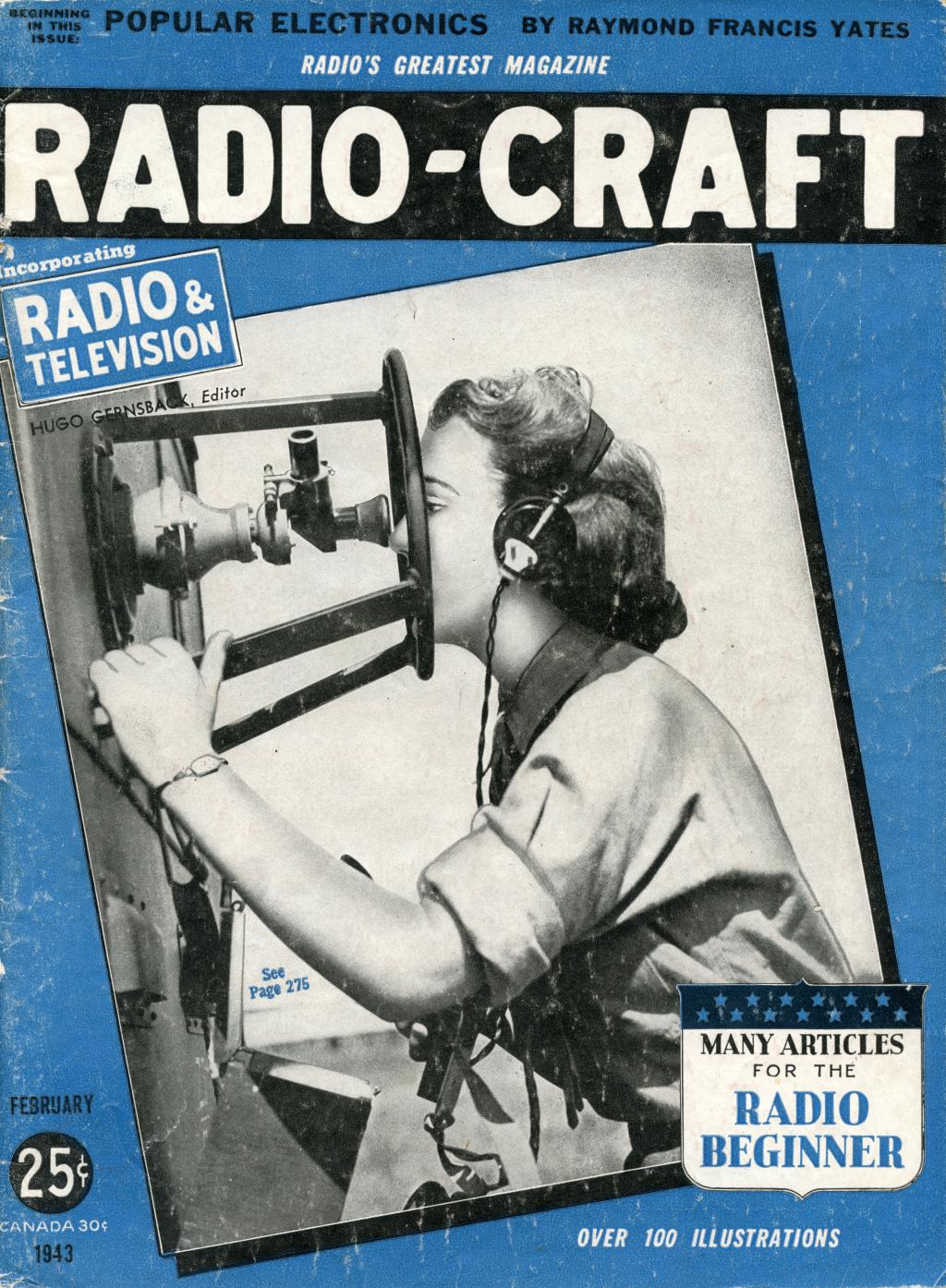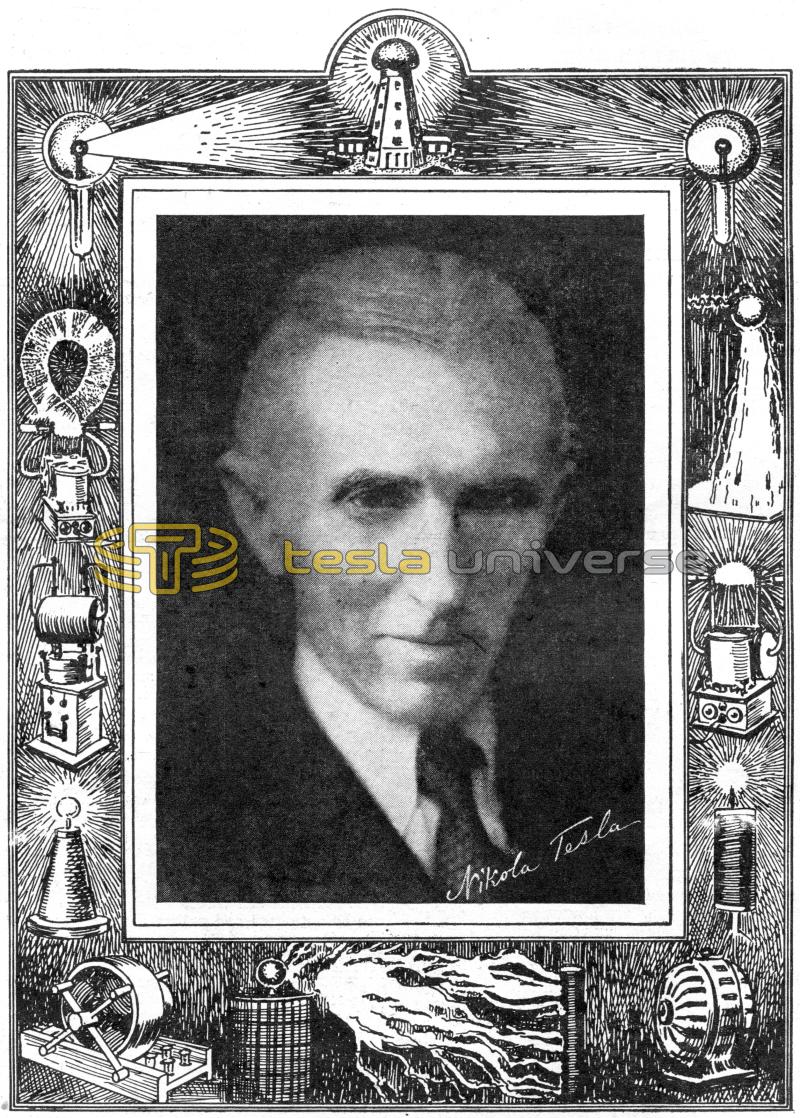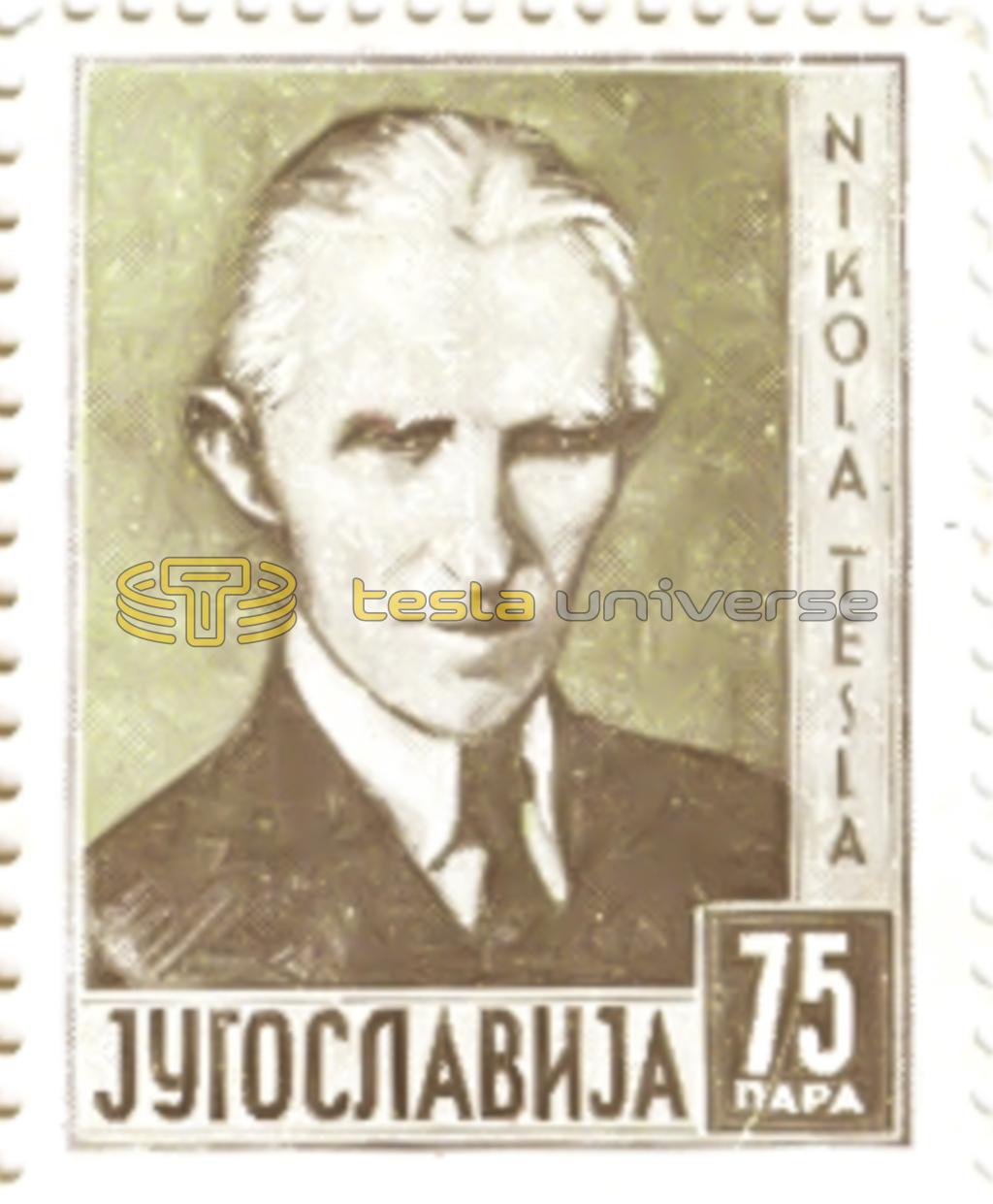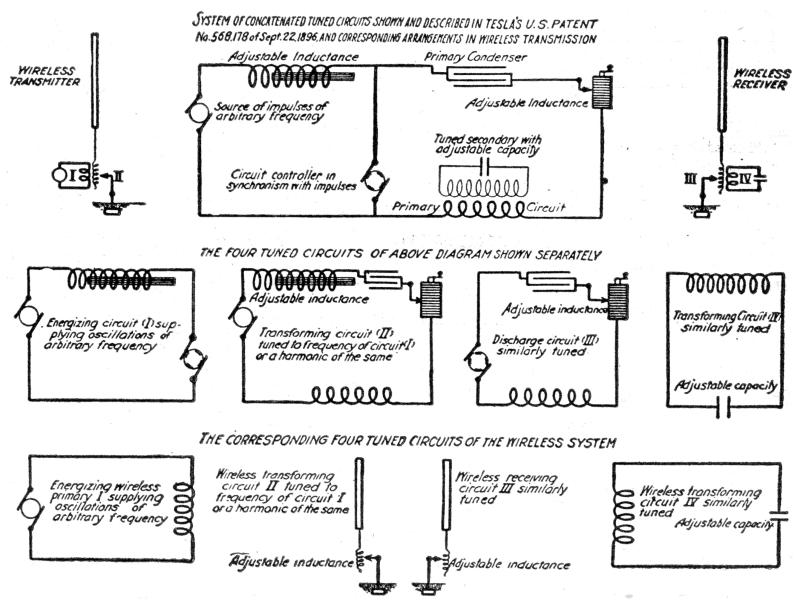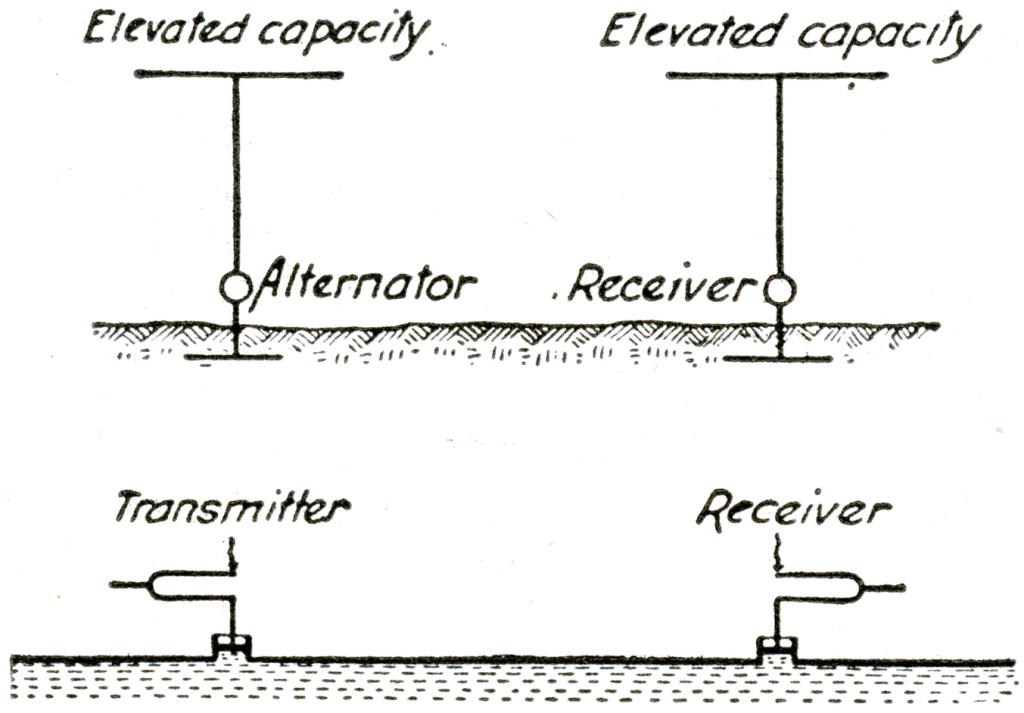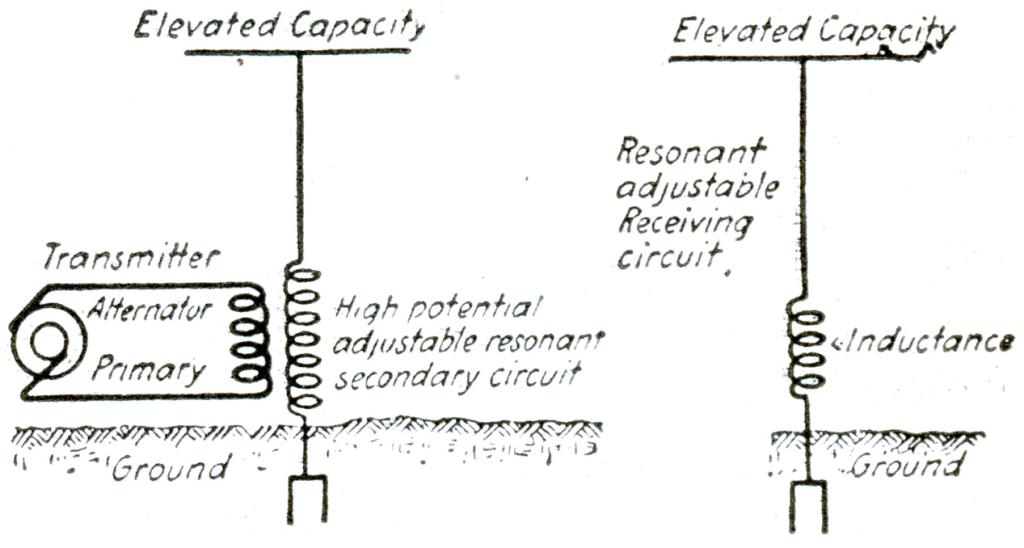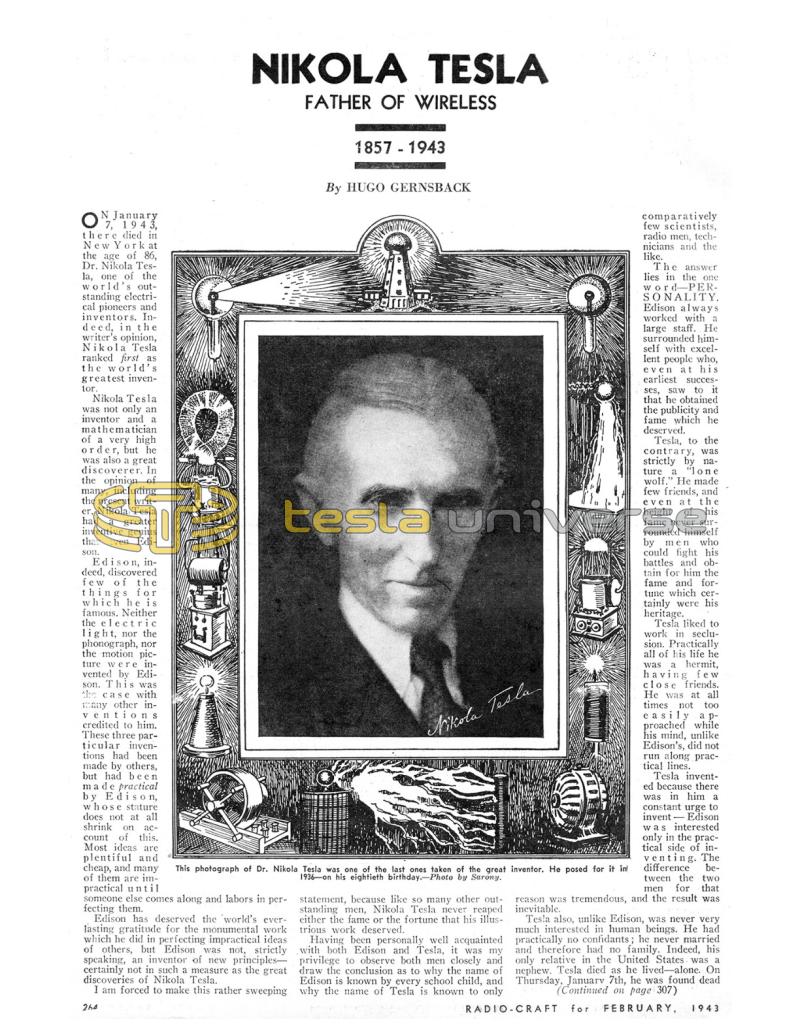
Nikola Tesla Articles
Nikola Tesla - Father of Wireless
Nikola Tesla
Father of Wireless
1857-1943
By Hugo Gernsback
On January 7, 1943, there died in New York at the age of 86, Dr. Nikola Tesla, one of the world's outstanding electrical pioneers and inventors. Indeed, in the writer's opinion, Nikola Tesla ranked first as the world's greatest inventor.
Nikola Tesla was not only an inventor and a mathematician of a very high order, but he was also a great discoverer. In the opinion of many, including the present writer, Nikola Tesla had a greater inventive genius than even Edison.
Edison, indeed, discovered few of the things for which he is famous. Neither the electric light, nor the phonograph, nor the motion picture were invented by Edison. This was the case with many other inventions credited to him. These three particular inventions had been made by others, but had been made practical by Edison, whose stature does not at all shrink on account of this. Most ideas are plentiful and cheap, and many of them are impractical until someone else comes along and labors in perfecting them.
Edison has deserved the world's everlasting gratitude for the monumental work which he did in perfecting impractical ideas of others, but Edison was not, strictly speaking, an inventor of new principles certainly not in such a measure as the great discoveries of Nikola Tesla.
I am forced to make this rather sweeping statement, because like so many other outstanding men, Nikola Tesla never reaped either the fame or the fortune that his illustrious work deserved.
Having been personally well acquainted with both Edison and Tesla, it was my privilege to observe both men closely and draw the conclusion as to why the name of Edison is known by every school child, and why the name of Tesla is known to only comparatively few scientists, radio men, technicians and the like.
The answer lies in the one word — PERSONALITY. Edison always worked with a large staff. He surrounded himself with excellent people who, even at his earliest successes, saw to it that he obtained the publicity and fame which he deserved.
Tesla, to the contrary, was strictly by nature a “Ione wolf.” He made few friends, and even at the height of his fame never surrounded himself by men who could fight his battles and obtain for him the fame and fortune which certainly were his heritage.
Tesla liked to work in seclusion. Practically all of his life he was a hermit, having few close friends. He was at all times not too easily approached while his mind, unlike Edison's, did not run along practical lines.
Tesla invented because there was in him a constant urge to invent- Edison w a s interested only in the practical side of inventing. The difference between the two men for that reason was tremendous, and the result was inevitable.
Tesla also, unlike Edison, was never very much interested in human beings. He had practically no confidants; he never married and therefore had no family. Indeed, his only relative in the United States was a nephew. Tesla died as he lived — alone. On Thursday, January 7th, he was found dead in his room at the Hotel New Yorker by the floor maid who reported the death.
Having been born in Yugoslavia, the Yugoslav Government in exile gave Tesla a state funeral. He was buried, after a service at the Cathedral of St. John the Divine, on January 14th. Over 2,000 people attended the rites. High Government officials of the Yugoslav Government attended the funeral. Honorary pallbearers included Dr. Ernest F. W. Alexanderson, well-known inventor of the Alexanderson alternator, of General Electric Company; Professor Edwin H. Armstrong of Columbia University, inventor of the Superheterodyne and Frequency Modulation; Dr. Harvey C. Rentschler, director of the research laboratories, Westinghouse Electric and Manufacturing Company; and hundreds of others of the Radio and allied industries. The body was taken to Ferncliffe Cemetery, Ardsley, N. Y., where it will lie in the receiving vault until final plans for burial are completed.
Many telegrams were received from dignitaries the world over. These included a telegram from King Peter II, and a telegram from Mrs. Franklin D. Roosevelt as follows: “The President and I are deeply sorry to hear of the death of Mr. Nikola Tesla. We are grateful for his contribution to science and industry and to this country.”
Many honors were heaped on Tesla during his lifetime. A list of the outstanding ones follows: Hon. M.A. Yale University, 1894. L.L.D. Columbia University, 1894. D.Sc. Vienna Polytechnic. He received the Elliott Cresson gold medal in 1893 in recognition of his original pioneer work, first presented before the Franklin Institute and the National Electric Light Association.
The Yugoslav Government honored him by issuing a series of Tesla postage stamps on his eightieth birthday in 1936. At the same time all the Yugoslav schools held a science festival in honor of Nikola Tesla.
Tesla and His Inventions
Tesla was the inventor of innumerable far-reaching basic inventions. Indeed, he made over 1,000 different inventions, 900 of which he patented during his long and eventful life.
In many ways Tesla's inventions were so far ahead of the times that even we of today are not able to fully appreciate the tremendous work which the master inventor accomplished. Many of his inventions will no doubt become more important as time goes on, and it is certain that posterity will realize the value of Tesla's accomplishments far more than does the present generation.
It is impractical here to give the long roster of all the hundreds of various inventions of Nikola Tesla. He was an inventor whose ideas were so far ahead of his time that many of these inventions could not be utilized at the time they were made, because frequently the arts had not caught up with his inventions — with the usual result — that late-corners often derived the benefit or his earlier work.
Thus it came to be that Nikola Tesla, who originally earned the name of “The Father of Wireless,” obtained no financial reward from his early work, although dozens of his inventions were used to make radio what it is today. By 1900 Tesla had patented a wireless system, much of which was used later on to make commercial wireless possible. As early as the year 1893, Tesla, before the Franklin Institute and Electric Light Association, (in February and March 1893) demonstrated the means of wireless transmission and reception. Tesla was the first who used an elevated capacity (aerial) at the transmitter side and a similar capacity at the receiver. The illustrations reproduced elsewhere in this article show the means he used to accomplish this. These very means were — used by Marconi and others who came much later and who appropriated Tesla's ideas.
To the end of his days Nikola Tesla maintained that the Marconi wireless system was an infringement on his methods and apparatus for transmitting energy without wires. Tesla in due time brought suit against Marconi but he could not establish his patent rights and blamed his failure to the paucity of technical knowledge of the times, of the lawyers and the court. Tesla could not make himself understood at that time, on the difference between wave lengths, particularly between micro-waves and short-waves. When, many years later his language had become clear — even to a mediocre technician — his original patents had run out. Nevertheless, there would have been no wireless transmission without Tesla's fundamental work.
Again Tesla caused a world-wide furor in the early 90's with his Colorado experiments. He erected a large experimental plant for the express purpose of carrying on his researches in high frequency, high-power electric currents. It is believed that he was the first man to reproduce artificial lightning. He did so as early as 1890 when he built the Tesla electric oscillator which produced twelve million volts at a frequency of 100,000 alternations per second. The primary used over 300 kilowatt. Lightning in huge sparks, thrown over a distance of 22 feet, created such an electrical disturbance in the surrounding earth, that one inch sparks could be drawn from grounded metal objects 300 feet from the laboratory. A little later, with the same system, Tesla obtained lightning-like sparks over 100 feet long.
Tesla wrote a number of articles of a biographical nature entitled, "My Inventions." These were printed in the magazine "ELECTRICAL EXPERIMENTER" published at that time by the writer. In the May 1919 issue of that magazine, there was shown a little-published photograph of a large metal sphere which showed a Niagara of lightning-like sparks with the following caption: “This illustrates Tests With Spark Discharges From a Ball of Forty Centimeters Radius in Tesla's Wireless Plant Erected at Colorado Springs in 1899. The Ball is Connected to the Free End of a Grounded Resonant Circuit Seventeen Meters in Diameter. The Disruptive Potential of a Ball is, According to Tests, in Volts Approximately V = 75,400 r (r being in Centimeters). That is, in This Case 75,400 X 40 = 3,016,000 Volts. The Gigantic Tesla Coil Which Produced These Bolts of Thor Was Capable of Furnishing a Current of 1,100 Amperes in the High Tension Secondary. The Primary Coil Had a Diameter of 51 Feet! This Tesla Coil Produced Discharges Which Were the Nearest Approach to Lightning Ever Made by Man.”
In his epoch-making Colorado experiments, in the year 1898, Tesla was the first to transmit actual energy by wireless. He succeeded in lighting electric lamps at a distance of over half a mile without any intervening wires. These were his famous electric high-frequency demonstrations in which most of the wireless energy was transmitted through the earth.
Tesla maintained to his death, that our present-day conception of radio waves transmitted through space is wholly wrong. He always denied the existence of free radio waves in space. His theory was that everything in radio could be explained by earth conduction. The writer once asked him how he could explain transmission of radio signals to and from an airplane. His answer was characteristic of him; his explanation was “a plain condenser action.” To Tesla's mind transmission took place simply by considering the airplane as one plate, the earth as the other plate of a condenser. Modem scientists do not agree with him in this respect, but all this does not decrease Tesla's fame.
To name only a few of his more outstanding and well-known discoveries, we may quote these:
One of his first inventions was a telephone repeater, but the one invention which brought him most of his fame was undoubtedly his revolutionary alternating current induction motor, which used neither commutator nor brushes. This invention was made in 1888, when practically only direct current motors were used. The induction motor is used throughout the world today.
He next invented his well-known system of electrical conversion and distribution by oscillatory discharges. In 1891 the now world-famous Tesla coil or transformer was invented. This really was the forerunner of wireless and the Tesla transformer with its condenser and methods of tuning all were then used, and much of it still is being used today, as it was in the early days of wireless.
In 1893 Tesla devised a system of wireless transmission and intelligence. Shortly thereafter he published his work on mechanical oscillators and generators of electrical oscillations. At the close of the century, Tesla did a tremendous amount of research work and made many discoveries in the field which we now call electronics. His work dealt with radiations in vacuum, with material streams and emanations. This included his now famous Tesla “cold” light which was the forerunner of our present neon lights and others.
In the year 1900 Tesla, backed by John Pierpont Morgan the elder, built his now famous Tesla Tower on Long Island. This fantastic appearing steel tower, 189 ft. high, was popularly known as a wireless tower but there was little technical information about it for many years.
In 1919 the writer asked Nikola Tesla to give a history of his tower which he did in a signed article entitled: “The Magnifying Transmitter.” This was published in the “ELECTRICAL EXPERIMENTER,” May 1919 issue. An excerpt follows:
The Magnifying Transmitter
“I have been asked by the ELECTRICAL EXPERIMENTER to be quite explicit on this subject so that the readers of the magazine will clearly understand the construction and operation of my ‘Magnifying Transmitter’ and the purposes for which it is intended. Well, then, in the first place, it is a resonant transformer with a secondary in which the parts, charged to a high potential, are of considerable area and arranged in space along ideal enveloping surfaces of very large radii of curvature, and at proper distances from one another thereby insuring a small electric surface density everywhere, so that no leak can occur even if the conductor is bare. It is suitable for any frequency, from a few to many thousands of cycles per second, and can be used in the production of currents of tremendous volume and moderate pressure, or of smaller amperage and immense electro-motive force. The maximum electric tension is merely dependent on the curvature of the surfaces on which the charged elements are situated and the area of the latter.
“This invention was one of a number comprised in my World-System of wireless transmission which I undertook to commercialize on my return to New York in 1900. As to the immediate purposes of my enterprise, they were clearly outlined in a prospectus of that period from which I quote:
“‘The World-System has resulted from a combination of several original discoveries made by the inventor (Tesla) in the course of long continued research and experimentation. It makes possible not only the instantaneous and precise wireless transmission of any kind of signals, messages or characters, to all parts of the world, but also the interconnection of the existing telegraph, telephone, and other signal stations without any change in their present equipment. By its means, for instance, a telephone subscriber here may call up and talk to any other subscriber on the Globe. An inexpensive receiver, not bigger than a watch, will enable him to listen anywhere, on land or sea, to a speech delivered or music played in some other place, however distant.’
“The World-System is based on the application of the following important inventions and discoveries:
“1. The ‘Tesla Transformer.’ This apparatus is in the production of electrical vibrations as revolutionary as gunpowder was in warfare. Currents many times stronger than any ever generated in the usual ways, and sparks over one hundred feet long, have been produced by the inventor with an instrument of this kind.
“2. The ‘Magnifying Transmitter.’ This is Tesla's best invention — a peculiar transformer specially adapted to excite the Earth, which is in the transmission of electrical energy what the telescope is in astronomical observation. By the use of this marvelous device he has already set up electrical movements of greater intensity than those of lightning and passed a current sufficient to light more than two hundred incandescent lamps, around the Globe.
“3. The ‘Tesla Wireless System.’ This system comprises a number of improvements and is the only means known for transmitting economically electrical energy to a distance without wires. Careful tests and measurements in connection with an experimental station of great activity, erected by the inventor in Colorado, have demonstrated that power in any desired amount can be conveyed, clear across the Globe if necessary, with a loss not exceeding a few per cent.”
When John Pierpont Morgan died, no more funds were forthcoming for the Tesla Tower and the work was abandoned. The tower was demolished during the first World War by the United States Government who feared that it might be used by the enemy to transmit messages.
The world will always remember Tesla; and we are certain that future generations will be in a better position to appraise Tesla's work than we of today.
NOTE: The radio diagrams shown in this article are taken from an exclusive article written for Hugo Gernsback and published in the "ELECTRICAL EXPERIMENTER" of May 1919, entitled: “The True Wireless” by Nikola Tesla.
Eulogies of the Press
From the hundreds of eulogizing editorials appearing in the press throughout the country, we have selected the three which we consider as outstanding examples of what the American press thought of Nikola Tesla.
From an editorial in the “New York Times”:
“NIKOLA TESLA
“If ever an inventor satisfied the romantic requirements of a Jules Verne novel it was Nikola Tesla. Communicating with Mars, plucking heat units out of the atmosphere to run engines, using the whole earth as an electrical resonator so that a man in China could communicate wirelessly with another in South America, transmitting power through space — it was to such possibilities that he devoted the last forty years of his long life. His practical achievements were limited to the short period that began in 1886 and ended in 1903.
“And what achievements they were! Polyphase currents and alternating engineering, applied against the opposition of Lord Kelvin and Edison in the first hydroelectric plant of Niagara Falls, the induction motor, the use of oil in transformers, remarkable work in wireless at a time when Marconi had yet to make his mark, electric arcs fed by direct current in a magnetic field, later applied by Poulsen in the first radiotelephone, gas-discharge lamps which were in some respects the forerunners of the neon lights that now shine on every Main Street, the medical application of high-frequency currents in what he called “Electrical massage” — those crucial seven years of his youth were crowded with triumphs out of which came the whole modern apparatus of high-voltage electrical engineering.
“Yet all this he affected to regard as of minor importance. It was the Jules Verne future that engrossed him, for which reason the last half of his life was spent in the isolation of a recluse. For forty years he lived and worked in a world of fantasy crackling with electric sparks, packed with strange towers to receive and emit energy and dreamy contrivances to give utopian man complete control of nature. It was a lonely life.
“There was a solid scientific basis at the bottom of all this romanticism. For he was no tinkerer, but a first-class mathematician and physicist whose blueprints were plausible, even though they were far ahead of the technical resources of his day. He belongs to the passing age of heroic invention of which Edison was the most distinguished exemplar — the age of technical poets who expressed themselves in generators, inductance coils and high voltages rather than in drama and verse and who were the real architects of this culture. If that abused word ‘genius’ ever was applicable to any man it was to him.”
From an editorial in the “New York Herald-Tribune”:
“The Drama of Mr. Tesla
“Mr. Nikola Tesla, the ‘wizard,’ died the other day, and he left a lot of questions unanswered. His solid accomplishments were astonishing in their scope — more than nine hundred patents, including the transforming coil and the induction motor. But, important as were his accomplishments, he deserves attention as a dreamer. He had always been absorbed by glimpses into the world of tomorrow, a world in which power would be transmitted by radio, in which science could make the desert blossom by what would amount to the touching of a button. There was no limit to the range of his imagination. He even envisioned airplanes, fighters and bombers and all, without engines. We cannot know, but it may be that a long time from now, when patterns are changed, the critics will take a view of history that will bracket Tesla with Da Vinci. Or with our own Mr. Franklin. Or with Dr. Loeb, who came close to the secret of life. One thing is sure: This world, as we run it today, did not appreciate his peculiar greatness.
“Mr. Tesla was eighty-six years old when he died. He died alone. He was an eccentric, whatever that means. A nonconformist, possibly. At any rate, he would leave his experiments and go for a time to feed the silly and inconsequential pigeons in Herald Square. He delighted in talking nonsense — or was it? Granting that he was a difficult man to deal with and that sometimes his predictions would affront the ordinary human's intelligence, here, still, was an extraordinary man — a genius he must have been. He was seeking a glimpse into that confused and misty frontier which divides the known and the unknown. Known and unknown? Perhaps it is eternally unknown. But we do know that Tesla, the ostensibly foolish old gentleman, at times was trying with superb intelligence to find the answers. His guesses were right so often that he would be frightening. Probably we shall appreciate him better a few million years from now.”
From an editorial in the “New York Sun”:
“Nikola Tesla
“As an inventor Nikola Tesla had the unusual experience of living for half a century after some of his most important discoveries and developments were announced to the world. He was thus able to see the application, improvement and consequences of a number of basic electrical inventions. Tesla's motor and his system of alternating current power transmission were devised in 1888; three years later he brought out a transformer, and by 1896 was experimenting with wireless. He shares with numerous other inventors, however, the more common experience of advancing some of his scientific ideas long before the world had become sufficiently informed to understand their importance. When we remember that Marconi's radio as a popular interest waited for the 1920's, it is easier to understand how fantastic seemed Tesla's proposals at the turn of the century for transmission of power without wires. In his later years when he appeared to be carried away with scientific notions of a highly impracticable kind, the world forgot the Tesla of fifty years ago, but continued to advance on inventions he had built.”
